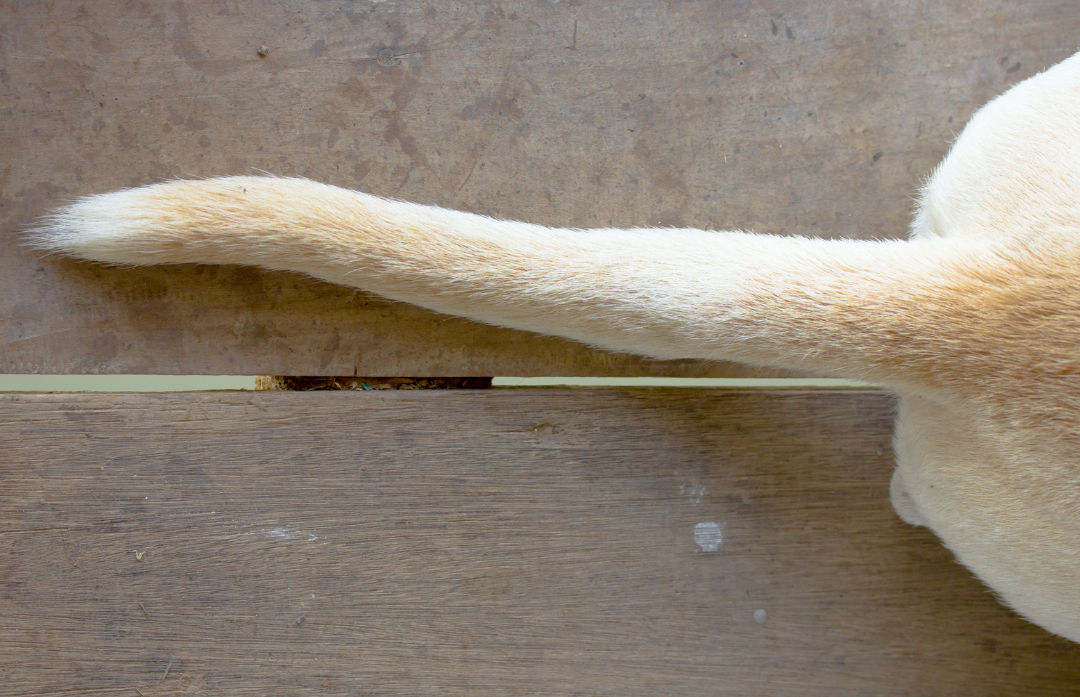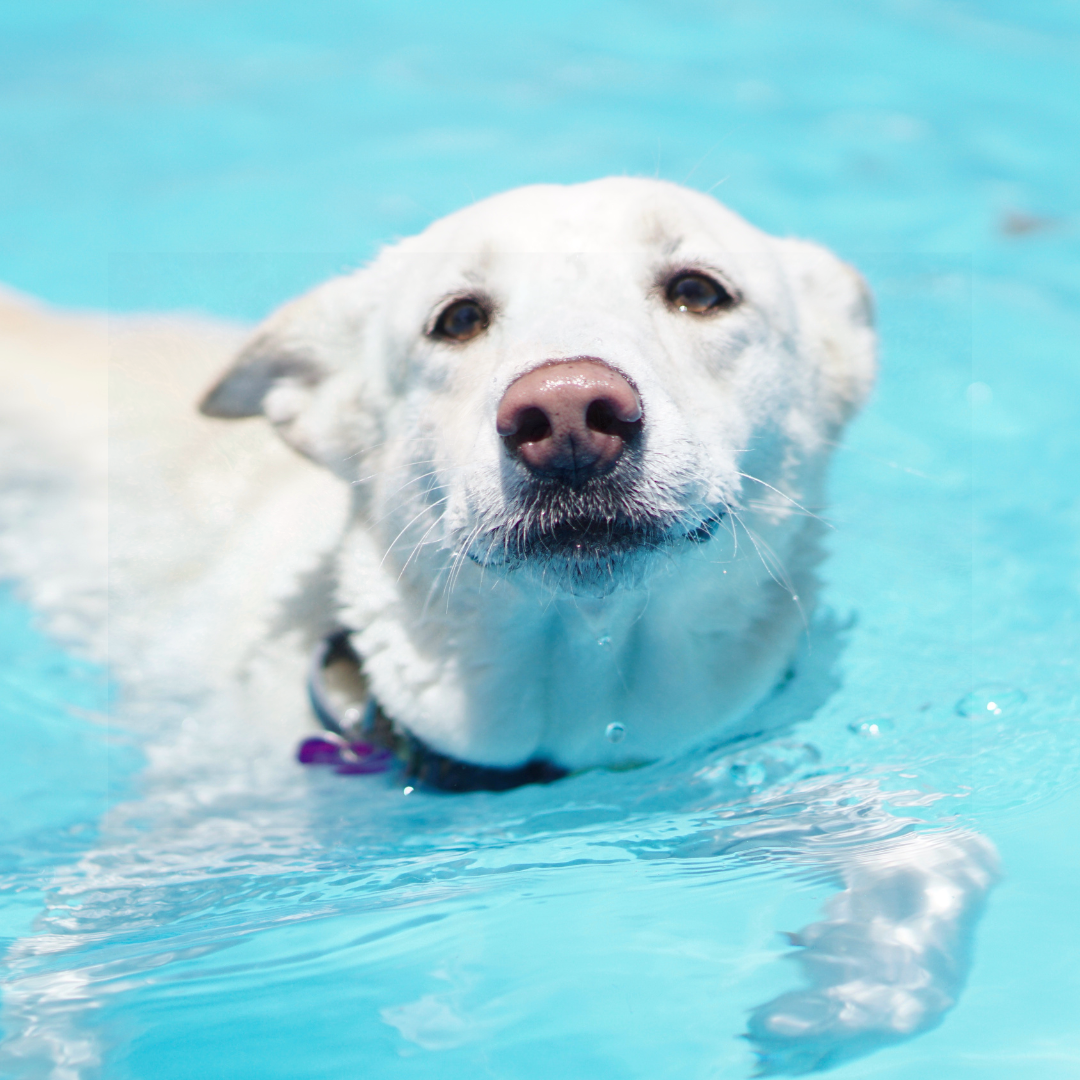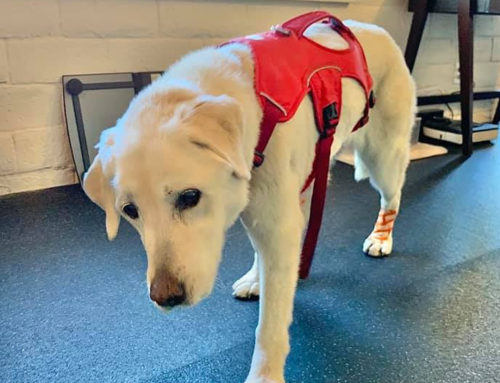Oh no! Did your dog’s tail suddenly go limp? Were they really active yesterday doing agility, swimming or playing an amazing game of fetch? They may be experiencing what’s called limber tail. Thankfully, it’s not as scary as it seems.

Limber tail also goes by MANY nicknames – wag sag, swimmer’s tail, cold tail, rudder tail, and probably many more! It’s most technical sounding name is acute caudal myopathy. Limber tail causes the tail to be limp and often painful. Most cases will resolve without a trip to the vet. It’s important for owners to be aware of this condition to avoid unnecessary panic, provide the right treatment, rule out other serious conditions and possibly prevent another episode.
What causes limber tail?
The cause of limber tail is not known for certain. It’s thought to be caused by injury to the muscles and/or nerves that control the tail. A study of Labrador Retrievers suggests that swimming or high levels of activity, especially in wet or cold conditions is a factor in a dog developing a limp tail. There does seem to be a possible genetic component to the condition as most dogs reported to experience the condition are working dogs.

Banshee without “wag sag”

Banshee experiencing limber tail. Note the tail droops straight down about 2″ from it’s base.
What does limp tail look like?
Dog’s with limp tail will either have a tail that hangs down flaccidly (i.e. limp) or extends briefly from the tail base then hangs limply (see photo of Banshee above).
How should I treat my dog for limp tail?
Most dogs with limber tail improve within a few days without any specific interventions. In dogs that are experiencing pain or distress it would be advisable to contact the veterinarian for a short course of pain medication or anti-inflammatories. Not all dogs with a limp tail experience pain.
Because dogs use their tail for balance when walking or running and as a rudder when swimming it would be advisable to not do any strenuous or challenging activities with your dog until their symptoms resolve. If they are off balance they are more likely to injury other areas of their body. It would also be advisable to avoid cold environments as this is one of the proposed causes of limp tail.
When should I see the vet for a limp tail?
If after a few days you’ve seen no improvement in your dog’s tail function your dog should be assessed by your veterinarian to determine if there is another cause of your dog’s limp tail. At any point in time if your dog has symptoms beyond a limp tail, such as difficulty moving the hind legs or incontinence, you should contact your veterinarian.
Can I prevent swimmer’s tail from happening again?
This isn’t a specific question that has answers in the research. However, it can be presumed that warming the tail and body after exposure to cold water or environments may help with prevention. A sufficient warm-up and cool-down before and after activity may be protective. As well as ensuring your dog has sufficient fitness to be engaging in the activities that are going to perform.

References:
Pugh, C A et al. “Cumulative incidence and risk factors for limber tail in the Dogslife labrador retriever cohort.” The Veterinary record vol. 179,11 (2016): 275. doi:10.1136/vr.103729
Harvey, Naomi. “What is causing limber tail syndrome in labrador retrievers?.” The Veterinary record vol. 179,11 (2016): 273-4. doi:10.1136/vr.i4974
Edge-Hughes, Laurie. “The Cold Tail Issue.” 1, Vol. 12, Four Leg News. March 19, 2023.




